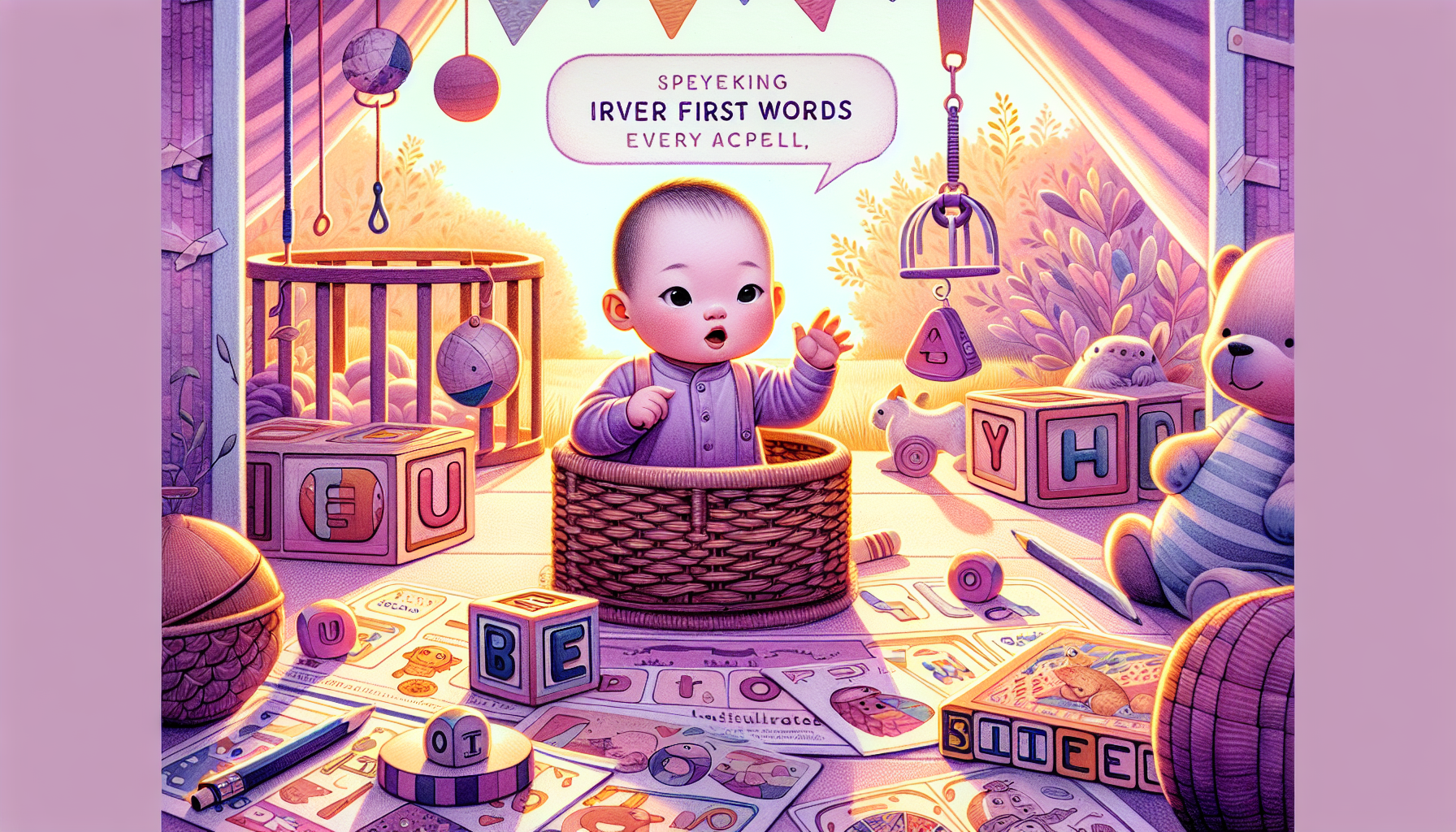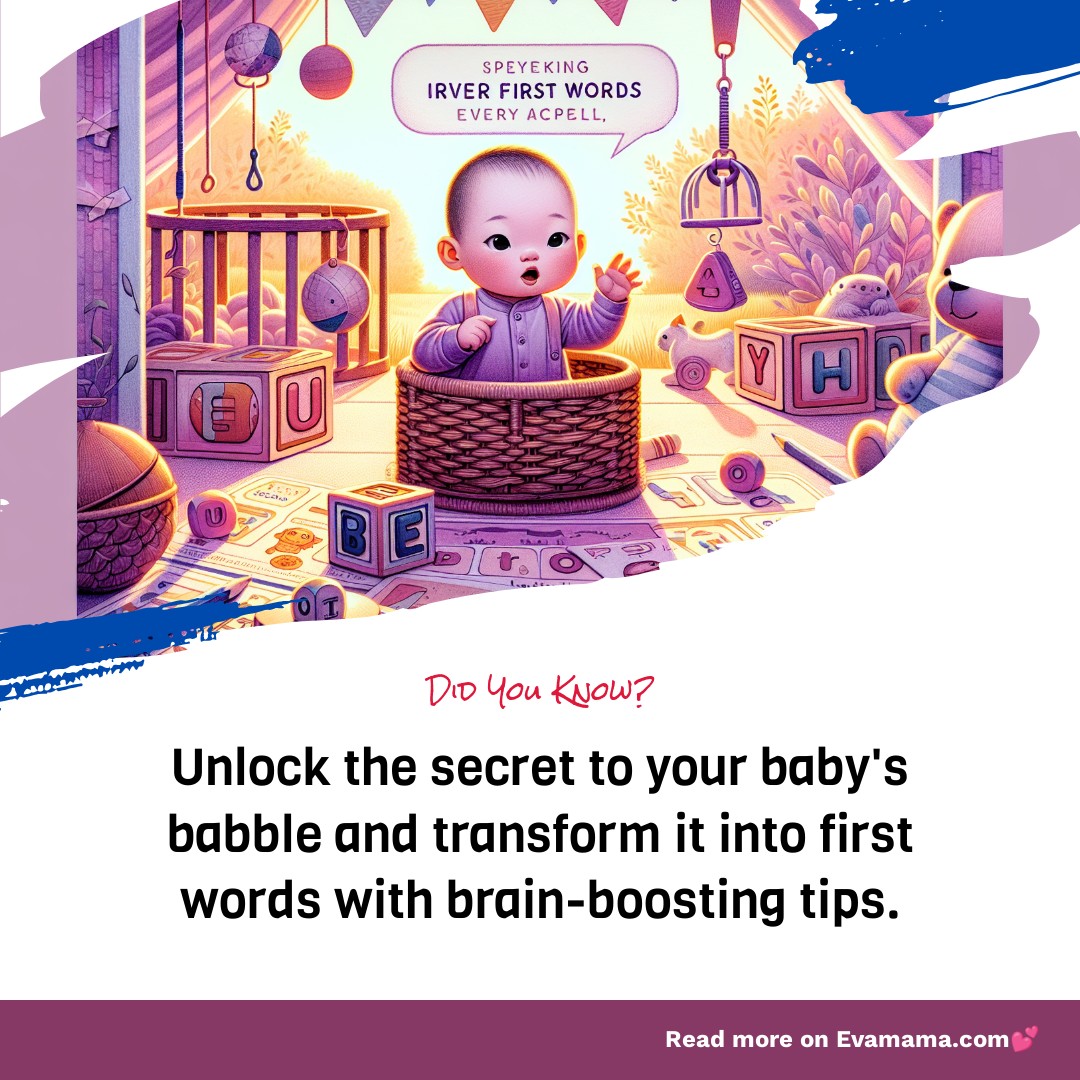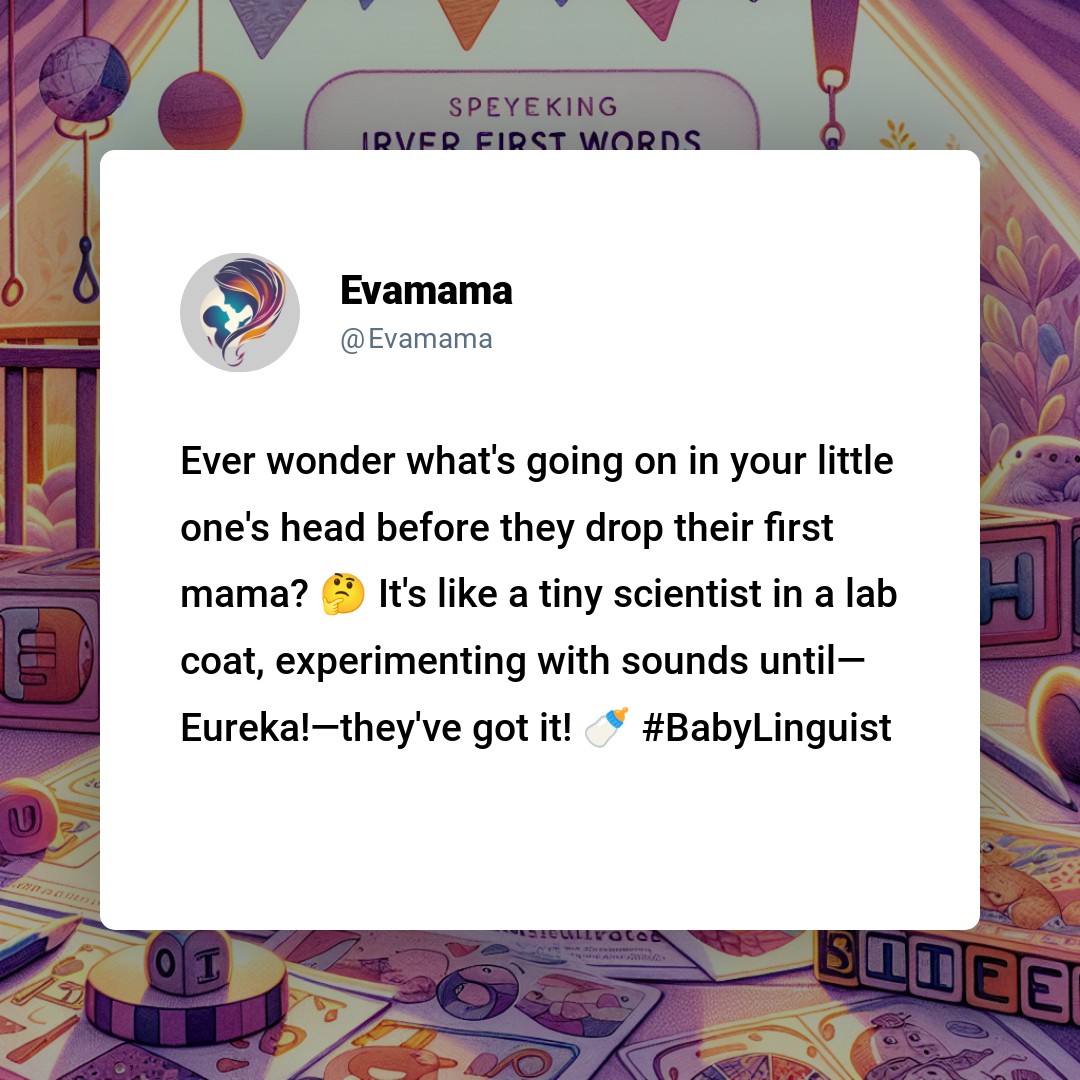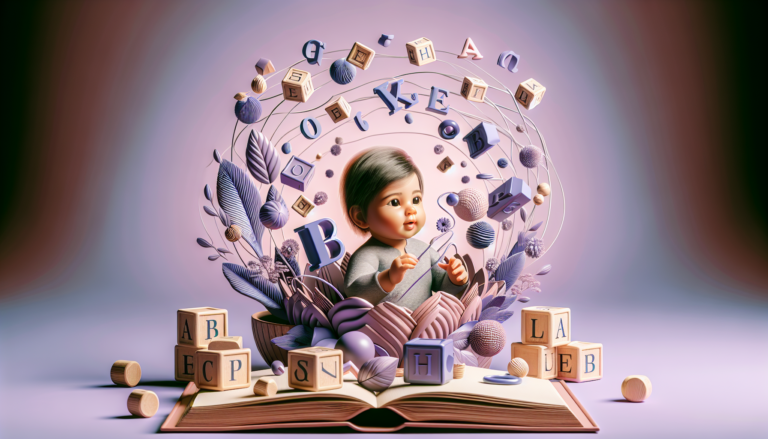Babys First Words Science: Unlock Cognitive Growth Tips
The Journey to Baby’s First Words: Decomposeing the Mysteries of Early Language Development
The science behind a baby’s first words is rooted in cognitive development. It’s a momentous occasion when your little one finally looks up at you and says “mama” or “dada.” But behind that simple word is a world of cognitive growth and learning that can seem as complex as it is wondrous.
It’s not just about the words; it’s about the journey to get there. As a parent, you’ve likely felt both the thrill of anticipation and the pang of worry—will my child’s speech develop normally? What if they’re behind?
Drawing from my own adventures in parenting and the latest research, I’ll guide you through understanding and nurturing your child’s language milestones. Together, we’ll unlock the secrets to their cognitive universe, one babble at a time.

The Prelude to Speech: Understanding Pre-linguistic Communication
Before babies can form words, they engage in pre-linguistic communication. This includes cooing, babbling, and varied intonations, all of which are critical precursors to actual speech. These sounds are your baby’s way of experimenting with their vocal cords and beginning to understand the rhythm and patterns of language.
Babbling as a Building Block: Around 6 months, babies start to babble, combining consonants and vowels like “ba-ba” or “ga-ga.” This isn’t just adorable; it’s a sign that they are practicing the art of speech. Babbling is their way of laying the groundwork for language, and each babble is a step closer to their first meaningful word.
The Role of a Stimulating Environment in Language Acquisition
Your baby’s environment is a rich adaptive landscape of sounds, sights, and experiences that contribute to language development. A stimulating environment includes a variety of sounds—not just speech but also music, nature sounds, and the hustle and bustle of everyday life.
Sensory Experiences and Cognitive Growth: Exposing your baby to different sounds helps them discern patterns and nuances in language. The clinking of dishes, the rustling of leaves, or the melody of a lullaby all provide auditory stimuli that enhance cognitive connections.
The Power of Caregiver Interaction in Early Language Skills
The interactions between you and your baby are the cornerstone of their language development. Every coo, smile, and conversation you share with your little one is an opportunity for them to learn.
Responsive Parenting and Language Milestones: When you respond to your baby’s coos and babbles, you’re teaching them the basics of conversation—taking turns, listening, and responding. This back-and-forth exchange is not just bonding; it’s a critical language lesson.
From Babbling to Understanding: The Emergence of Comprehension
As your baby approaches their first birthday, they begin to understand simple words and phrases. This is a monumental leap from producing random sounds to recognizing that specific sounds have meaning.
The Recognition of Names and Commands: Your baby will start to respond to their name and simple commands like “no” or “come here.” This shows that they are not just hearing, but also processing and understanding language, a precursor to producing it themselves.
The Transition to Speech: Producing Single Words
The magical moment arrives: your baby says their first word. It’s often a simple and familiar term like “mama” or “dada,” but it’s a giant leap in language development.
First Words and Emotional Connection: Babies often say words that have emotional significance to them. They choose words that they hear often and that represent their most important relationships and needs.
Supporting Your Baby’s Language Development Through Everyday Interactions
Everyday interactions are opportunities to support your baby’s language development. Narrate your day, read books together, and engage in play that involves naming objects and describing actions.
Narration and Vocabulary Expansion: By talking about what you’re doing, you’re introducing your baby to new words and concepts. “I’m slicing an apple” or “We’re going for a walk” are simple phrases that build your baby’s vocabulary.
Early Intervention Programs: Boosting Language Skills
If you have concerns about your baby’s language development, early intervention programs can provide support. These programs offer resources and strategies to help children who may be experiencing delays in language development.
Tailored Support for Individual Needs: Early intervention specialists work with you and your baby to create a personalized plan that addresses specific language challenges. They can offer techniques and activities that promote language growth.
The Table of Language Development: A Quick Reference Guide
| Age Range | Language Milestones | How Caregivers Can Support |
|---|---|---|
| 0-3 months | Cooing, eye contact | Respond to coos, make eye contact |
| 4-6 months | Babbling, laughter | Babble back, introduce varied sounds |
| 7-12 months | Understanding words, simple gestures | Name objects, use simple commands |
| 12+ months | First words, following simple instructions | Expand vocabulary, read together |
Cultivating Your Baby’s First Words: Speech Development Strategies

Creating a language-rich environment is like planting a garden of words for your baby to harvest. Surround them with a variety of sounds and expressions, and you’ll see their vocabulary bloom. Talk to your baby often, narrate your day, and describe your actions. This constant verbal interaction is the sunlight that helps their speech grow.
Engage in Interactive Play to Foster Language Skills
Interactive play is a dance of words and actions. As you play peek-a-boo or stack blocks, narrate your actions and wait for your baby’s response. This back-and-forth exchange is the foundation of conversation. It’s not just play; it’s a dialogue where each coo and giggle is a step towards their first words.
The Magic of Reading and Singing to Your Little One
Books are treasure troves of new words, and songs are melodies that make language stick. When you read a story, point to pictures and emphasize keywords. Sing nursery rhymes and encourage your baby to mimic the sounds. This isn’t just a bedtime routine; it’s a language lesson set to the rhythm of your voice.
Gestures and Sign Language: Tools for Pre-Verbal Communication
Before words, there are gestures. Teach your baby simple signs for “more,” “eat,” or “milk.” These signs are bridges to words, giving them tools to express their needs. When they wave “bye-bye” or clap their hands, they’re learning that movements can convey messages just like words do.
Creating a Dialogue with Your Baby
Speak with your baby, not at them. Ask questions, pause, and anticipate their responses. This isn’t a monologue; it’s an invitation to a conversation. Your baby might not answer with words, but their babbles and expressions are their way of joining the chat.
The Role of Repetition in Language Acquisition
Repetition is the drumbeat of learning. Repeat words and phrases to your baby. This redundancy isn’t just for emphasis; it’s how your baby learns to recognize and eventually repeat sounds. It’s the echo that turns into speech.
Embrace the Power of Naming
Name everything around you. The dog isn’t just a dog; it’s a “fluffy dog.” The ball isn’t just a ball; it’s a “red ball.” This isn’t just labeling; it’s expanding your baby’s world one word at a time.
Responding to Babbling with Encouragement
When your baby babbles, respond as if it’s meaningful conversation. This isn’t just humoring them; it’s validating their attempts at communication. It’s the nod that encourages them to keep ‘talking.’
The Importance of Clear and Frequent Language Exposure
Speak clearly and frequently to your baby. This isn’t just about quantity; it’s about quality. Clear speech is the blueprint your baby uses to build their own words.
Table: Daily Activities to Encourage Speech Development
| Activity | Description | How It Helps |
|---|---|---|
| Mealtime Conversation | Talk about the foods and actions during meals. | Introduces new vocabulary and daily rituals. |
| Storytime | Read books with vibrant pictures and simple text. | Enhances listening skills and word recognition. |
| Sing-Along Sessions | Sing nursery rhymes and simple songs. | Reinforces language patterns and rhythm. |
| Playful Mimicry | Imitate your baby’s sounds and encourage them to copy yours. | Promotes sound play and early word formation. |
| Sign Language Basics | Use simple signs to communicate needs. | Provides a foundation for expressing thoughts before verbal skills develop. |







